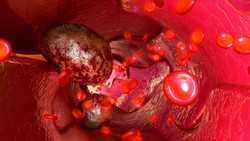Circulating tumour cells – the gate to personalised cancer treatment
CTCs detach from a primary tumour or metastatic site and circulate in the peripheral blood with the potential to give rise to a new metastasis. Analysis of CTC composition could be used to personalise cancer therapy. At present, CTC can only be obtained in a small fraction of patients. The goal of the EU-funded CTCTrap(opens in new window) (Circulating tumour cells apheresis: a novel biotechnology enabling personalised therapy for all cancer patients) programme was to enable the isolation of CTC in all patients with disseminated cancer to optimise therapy. CTCTrap researchers explored various approaches to isolate CTC from large volumes of blood (up to two litres). The final design evaluated in cancer patients combined diagnostic leukapheresis (DLA) with the FDA-cleared CellSearch® system targeting EpCAM+ CTC and filtration of the EpCAM depleted fraction to obtain EpCAM- CTC. DLA is a type of extracorporeal process where blood is passed through an apparatus to separate a particular constituent and the remainder is returned to the patient circulation. EpCAM (epithelial cell adhesion molecule) is a glycoprotein expressed on epithelial cells and most carcinomas. Filtration is used to select CTC based on relatively larger size an increased stiffness of CTC as compared with blood cells. This combined approach significantly increased the number of isolated CTC, enabling the comprehensive real-time characterisation of cancer. Validation of the technology using blood from prostate and breast cancer patients resulted in the isolation of EpCAM+ as well as EpCAM- CTC. Investigation is still ongoing as long-term follow-up is needed to correlate the presence of different subsets of CTCs with clinical outcome, which in combination with the molecular and protein characterization of the CTC can provide insights in the optimal therapy choice for cancer patients. The CTCTrap programme represents a significant step towards better tests and selection of appropriate anti-cancer therapy. It also improves the efficiency of the treatment and access to personalised therapy while addressing the issue of affordability.







